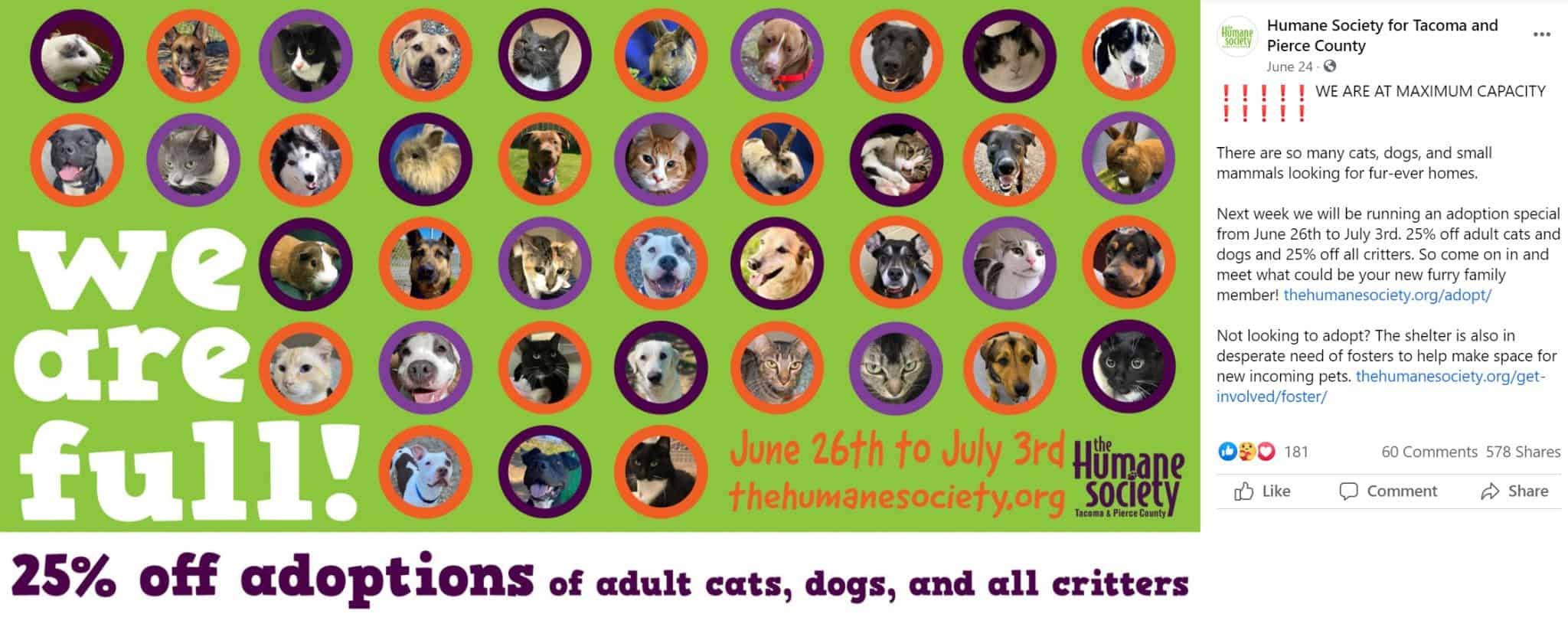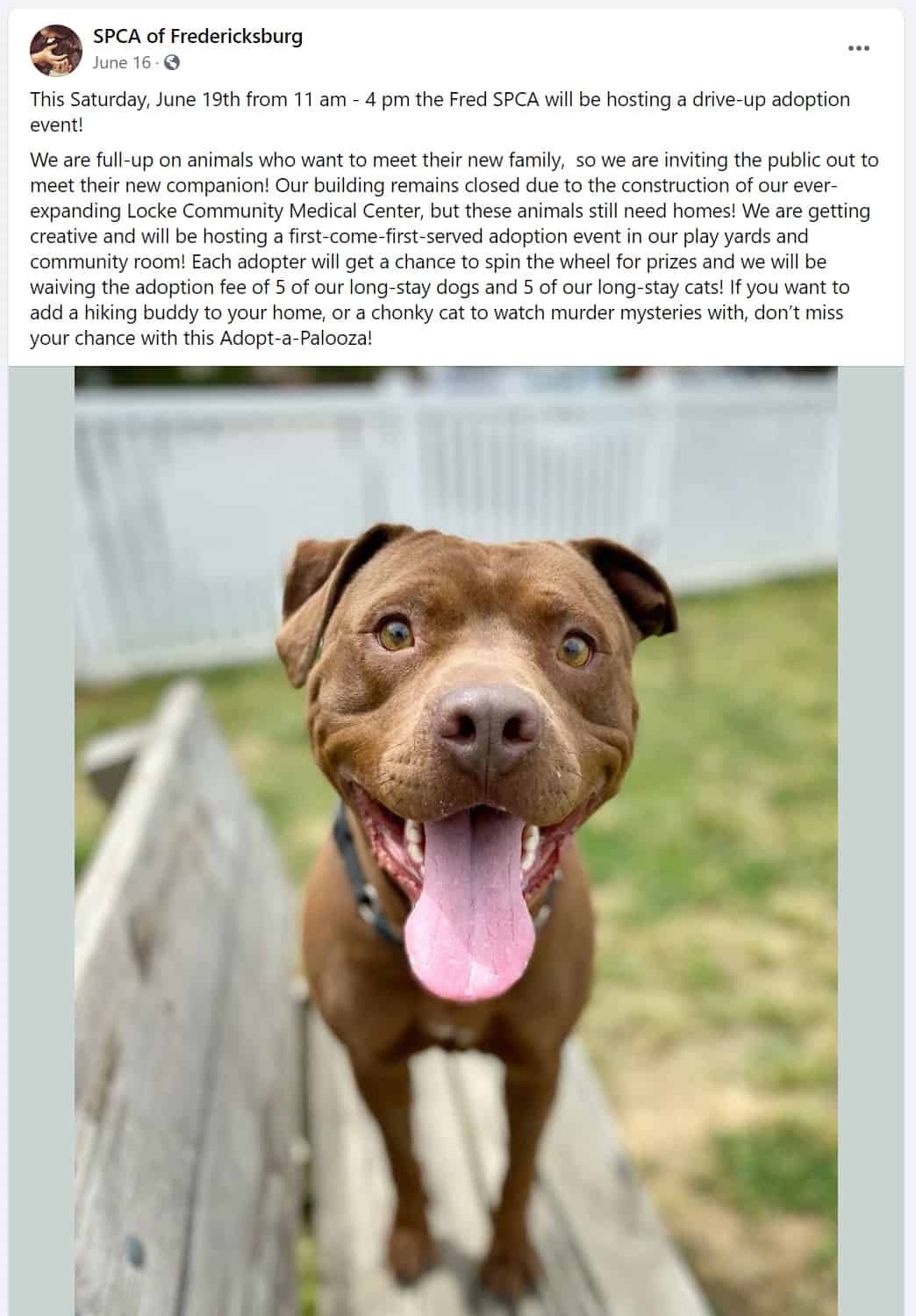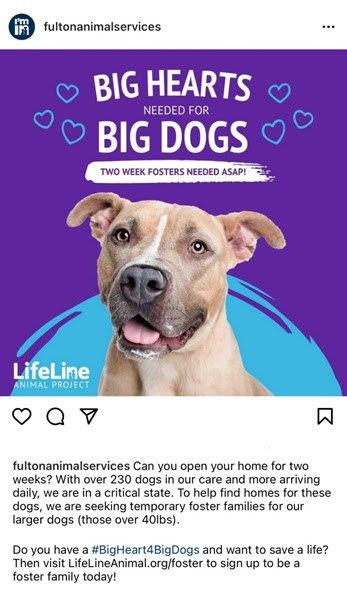“SOS! We are in a state of emergency! We are DROWNING in dogs and cats and are in desperate need of help. Our shelter is FULL and we are begging and pleading for people who want to help us save lives! We simply don’t have room for all of the animals entering our shelter on a daily basis. Just yesterday we took in 50 strays, 20 owner-surrendered pets, but only 7 were adopted. We have dogs and cats that have been living in kennels for months waiting for a special person to come save them.”
Does this look familiar? If you’re experiencing a space or length of stay crisis in your shelter or rescue, you’re probably utilizing every tool at your disposal to ask for help, including social media. And getting an effective message across — one that will drive your community to action — is half the battle. When things are difficult, we often want to convey urgency and get the community to act accordingly, and while posts that include language like “SOS” and “drowning” help convey our desperation and may get attention, they may also make it harder for people to take action. Especially in a sustained crisis, one where space is tight for months on end, we run the risk of fatiguing our supporters with negative or scary-sounding language. Ultimately, those negative assumptions are not what we want people associating with our organizations.
Without a strong focus on telling the reader what they can do to solve the problem, we risk making them want to turn away out of helplessness, or worse, feeling like they need to save animals from us instead of with us. So, how can we make our supporters understand some of what we’re experiencing, while also motivating them to lend a hand for the right reasons?
To truly be effective in our missions during times where everything seems bleak and cynicism is rampant, animal welfare organizations need to seize the opportunity to be seen as a source of hope and positivity! Your organization should be viewed as a trusted resource and a collaborator in life-saving with the community. In order to do that, we need to examine our language and how it motivates people.
Critically, this doesn’t mean that messages have to ignore tough situations or provide tone-deaf positivity. Rather, balancing transparency and clarity with hope and leadership can still convey the seriousness of a situation while also building trust. When talking about a space or length of stay crisis through social media, ask yourself the following questions:
- Will it have a positive impact on how my organization is perceived in the community?
- Will it compel people to act for the right reasons?
- Does it inspire hope?
- Does it contain a concrete way people can help?
Here are some great examples from shelters that do an excellent job of asking for help during a space crisis:
Eye-catching graphics and visuals combined with a great photo of a pet will likely capture the attention of someone scrolling through social media. But it’s not enough just to be visually compelling, your language matters too! In the examples below, these shelters do a fantastic job of balancing the transparency of the situation with hope-inducing actions. The messages are clear, and each organization does a nice job of explaining the specific ways that the public can offer help.
Wherever possible, these examples share the problem and then immediately pivot to the ways that people can help or the light at the end of the tunnel. This reduces the chance that their followers will be overwhelmed into inaction, and can increase the likelihood that they feel they can help.

Credit: Humane Society for Tacoma and Pierce County

Credit: Front Street Animal Shelter
 .
. 
Credit: SPCA of Fredericksburg. Credit: Fulton County Animal Services
With positive, hopeful, and inspiring language, combined with telling the reader that they would literally be a hero if they take these specific steps to help, you’re going to see more results: Everyone wants to be a hero, you just have to tell them how!
In addition to the real-life examples above, here are a few sample templates you can use and edit to your liking.
- “Your support is needed! Our shelter may be at capacity, but what about your home? That extra seat on your couch sure would be a lot cuter with a furry friend curled up on it. With the shelter being full, there’s never been a better time to adopt, and there are so many adorable faces to choose from with at least 2 pets in every kennel here at XYZ!”
- “Our shelter is completely full, so for a limited time, we are offering free and discounted adoptions! If you’ve been thinking about adopting a new pet, now is the best time to make the greatest impact. With so many animals coming in each day, and so few being adopted, our shelter needs our animal-loving community to come forward to foster or adopt!
- “We need adopters and foster parents, stat! The record number of animals arriving in our shelter daily means we have completely run out of space in our kennels. With multiple pets per kennel, makeshift living spaces in our lobby, and a dog or cat in every office, we are urgently in need of families who can adopt or foster. Whether you’re looking to spend forever with a new furry family member, or you’re only willing to commit to a week or two, your support will go a long way during this time when we are low on space.”
- “Our shelter is full and we need your support! We know that you are just as passionate about our mission as we are, so we are asking for your help. We need adopters, fosters, volunteers, and people willing to transport pets. Let’s work together to get every single animal into a loving home! If you can help, go to our website or visit us in person!”
Rather than concentrating on the negative reality — which is that the shelter is out of space and things are looking grim — these statements tell people how exactly they can help. The image of a cute pet snuggled up on your couch is a positive motivator, in contrast to a person motivated to adopt because they feel like they need to save an animal from a scary, overcrowded shelter. These examples contain several statements that empower the reader (“now is the time you’ll be making the greatest impact”) and also make them feel included and wanted (We know that you are just as passionate about our mission as we are”).
REMEMBER: Using positive language and visuals doesn’t mean you need to beat around the bush and ignore the obvious: there is sadness and urgency in the fact that so many pets need homes. Acknowledge the space crisis, but focus on the future and the potential. After all, saving pets is a collaboration between organizations like yours and the people in your community.
Relevant Resources:
Template: Space-themed Adoption Special
Template: Shelter Capacity Meter
Adding Urgency to Appeals | Nonprofit Marketing Guide
Communicating Urgency without Negativity in Emergency Fostering | Maddie’s Fund
Emergency Tactics: How to Write an Emergency Social Plea for Adopters and Fosters | Human Animal Support Services

